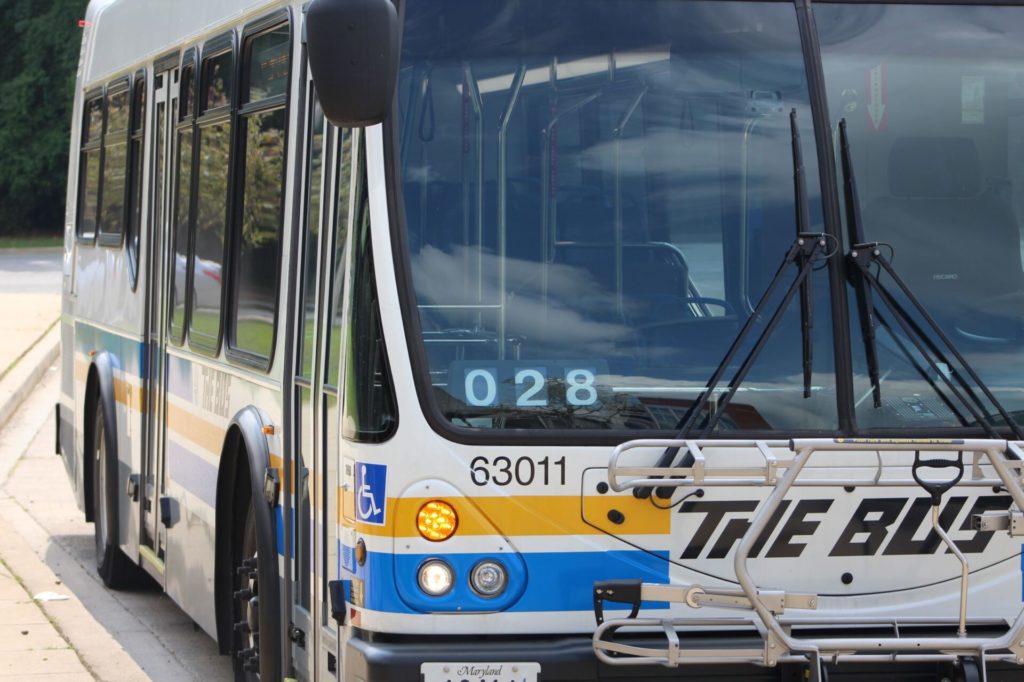For Immediate Release
June 17, 2021
Contact
Ben Fried, TransitCenter, 347-675-5592
Stewart Schwartz, Coalition for Smarter Growth, 703-599-6437
Ron Thompson, DC Transportation Equity Network, 202-780-7940
New Analysis Measures Racial and Economic Disparities in Transit Access Across National Capital Region
The Transit Equity Dashboard illustrates inequities in access to jobs, health care, and other services for Black and brown residents.
An analysis released today measures racial and economic inequities embedded in the National Capital Region’s transportation network. The Transit Equity Dashboard, produced and launched today by the national foundation TransitCenter, maps and quantifies the disparities in transit access caused by segregation and discrimination in land use and transportation policy. TransitCenter is releasing findings for an initial six U.S. metropolitan regions over the coming week.
The COVID crisis made racial inequities in public health and economic status very plain, and demonstrated just how critical transit is for our essential workers. “As recovery from the pandemic accelerates in greater DC, our organizations call on political leaders to prioritize public investments that will shrink gaps in transit access and address other inequities as a result, putting the region on the path to a just recovery,” said Ron Thompson of the DC Transportation Equity Network.
People of color are more likely to rely on transit in the Capital region — in 2019, 18% of Black residents took transit to work, compared to 12% of white residents. But disparities in transit access linked to race and economic status are undermining transit’s capacity to function as a “ladder of opportunity” connecting people to jobs, education, medical care, and other necessities. Using data from transit agencies and the U.S. Census, the dashboard reveals these disparities.
In addition to job access, the dashboard measures transit access to grocery stores, hospitals, parks, and colleges, reflecting the fact that most trips are not commute trips, and that equitable transit enables people to access more than the workplace. Key findings include:
- The average Latinx resident can access 157,040 potential jobs in 45 minutes using transit, the average Black resident can access 160,893 jobs, and the average Asian resident 184,018 jobs — compared to 256,140 for the average white resident.
- On a weekday evening, it takes 40 minutes for the average resident of the Washington D.C. region to take transit to the nearest hospital, and even longer for the average Asian or Latinx resident. Poor access to healthcare is associated with worse health outcomes; it also means long transit commutes for essential healthcare workers working second- and third-shift roles.
- On a weekend morning, it takes more than three times longer to reach the closest hospital using transit than using a car, and nearly three times longer to reach the third-nearest grocery store. The dashboard measures time to the third-closest grocery store to show how effectively transit connects people to a variety of options.
Achieving more equitable transit in greater DC will require changes to both the broad sweep of transportation and land use and the specifics of transit operations and fare policy. Advocates have proposed reforms to remediate the racial and economic divides in the region’s transit access, including:
- Redesigning bus networks in DC, Northern Virginia, and Maryland to expand access to jobs.
- Operating transit more frequently throughout the day and week, in order to better meet the needs of essential workers.
- Dedicated transitways to make bus and streetcar service faster and more reliable, both within DC and throughout the region.
- Addressing the east-west economic and racial divide that cuts across the region as well as the racial and economic residential segregation apparent within each jurisdiction.
Transit agencies and local governments in the Capital region should also adopt new performance targets that measure inequities like those identified by this dashboard, and assess progress toward equitable transit access.
“TransitCenter’s maps highlight once again the need to address the region’s east-west racial and economic divide, as well as the need to prioritize dedicated bus lanes, more affordable fares, and networks redesigned for more frequent service and improved access to jobs,” said Stewart Schwartz, Executive Director of the Coalition for Smarter Growth.
While noting the recent actions by the WMATA board on service changes and fare affordability, the Alexandria DASH bus network redesign, and planning for regional network redesigns, the groups collectively urged much more rapid progress.
###


